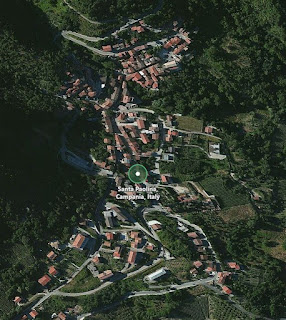My family didn't pass down any paperwork. There were no birth certificates. No marriage certificates. No citizenship papers.
That's why I'm amazed at the photos other genealogists post of their slumped-over piles of color-coded folders. Their stacks of plastic bins filled with documents. Their rows of acid-free archive-quality storage boxes.
 |
| Whatever paper genealogy documents you have, digitize them! |
I have one fat folder of paper documents related to my family tree. It rests comfortably in my two-drawer file cabinet along with every other piece of paperwork associated with my life.
Wag your finger at me if you must, but I'm here to urge you to digitize your family history! Our goal as family historians is to preserve and share every fact and document of our ancestors' lives.
That requires making their birth certificates, death certificates, and precious photographs:
- fireproof
- accessible
- safe from obsolescence
This seems like an overwhelming task to many family tree researchers. But isn't every aspect of building a family tree overwhelming? For goodness sake, you have 64 great great great great grandparents alone!
Like any other genealogical task, you have to set your goals, divide, and conquer. Choose a branch and dive in with these tasks:
- Scanning: A good scanner is not expensive. But if your budget is tight, consider borrowing one for a few days. Or get a free scanner app for your phone.
- Saving: Your family tree software should have the option of exporting your work as a GEDCOM file. A GEDCOM is a highly compatible format that any family tree software can open and use. Save your work as a GEDCOM regularly.
- Storing: Remember 3½-inch floppy disks? Computers can't read them anymore. A CD drive isn't even standard equipment on many new laptop computers. So practice redundancy:
- Burn your digital files to a CD or DVD.
- Copy them to an external hard drive.
- Store them on one of the many clouds available to you: GoogleDocs, Dropbox, OneDrive.
- Use FamilySearch.org, Ancestry.com, or another genealogy website to hold your family tree and its document files.
As genealogists, we love living in the past. We treasure each scrap of evidence of our ancestors' lives.
But we've got to plan for the future and the longevity of our hard work.
When it comes to one specific ancestor, like your maternal grandmother, you only want one. But when it comes to preserving her documents and photographs, redundancy, redundancy, redundancy!








